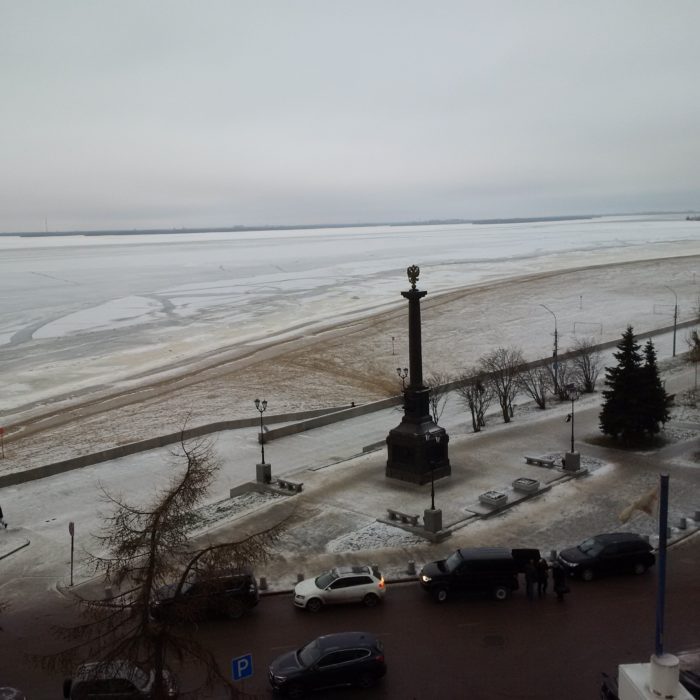21st November 2016
Remembrance Day Commemorations in North West Russia
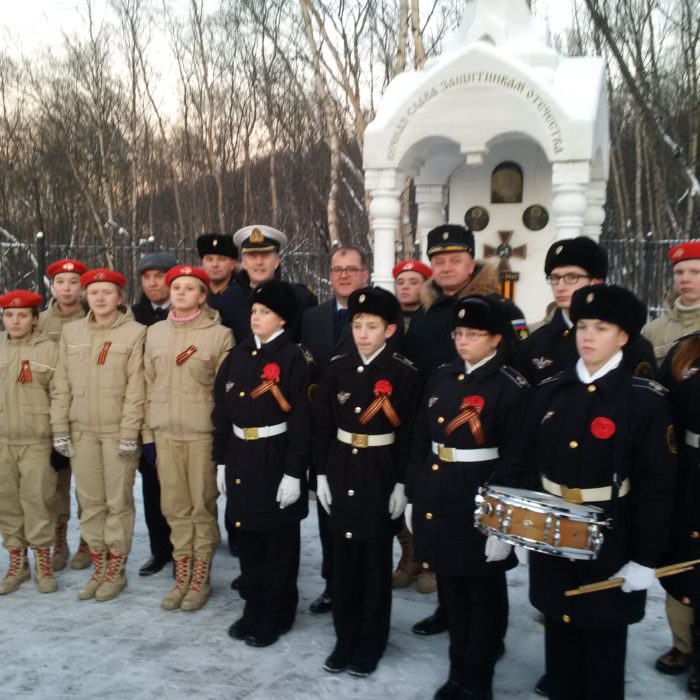
Every November we recognise the brave British and Allied soldiers, sailors and airmen who served in North West Russia during World War One, including the Allied Intervention period of 1918-19, and World War Two. This was a particularly important year as we commemorated the 75th anniversary of the arrival of the first of the Arctic Convoys in the Soviet Union in 1941.
Events started on Remembrance Sunday with an Anglican service at the old Swedish church in St Petersburg. We had hoped to hold the service in the old English church on English Embankment but unfortunately permission was withdrawn the day before the service. The building does not belong to the church and has not been used as a church since the Russian Revolution, so gaining access for a service is not straightforward. Nevertheless, we managed to have a very nice service conducted by the retired Naval Chaplain, the Rev. John Summers. We were also delighted to welcome representatives of the Russian Orthodox church from the famous Kronshtadt Cathedral. After the service we enjoyed lunch and were entertained with some Russian and British songs at the consulate.
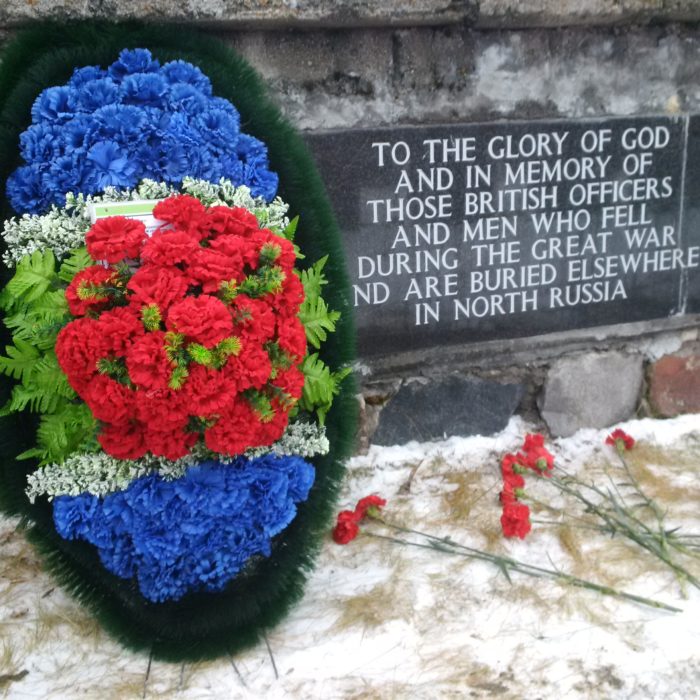
I headed north to Murmansk the following day with our Defence Attaché from Moscow, Captain Chris Connolly, and a colleague from the consulate. Murmansk played a key role in the convoys of World War Two and this year celebrated the 100th anniversary of the founding of this important port city. With the assistance of the Russian Northern Fleet, we laid wreaths and paid our respects wth a minute’s silence at the British and Allied cemeteries in Severomorsk and Murmansk. In Murmansk, there are two cemetries, one recognising those who died during World War One and the Intervention period, and the other World War Two. All three cemeteries are very well maintained and are a fitting monument to those who perished while serving in the wider Murmansk region. A plaque in the WWI cemetery in Murmansk reads: ‘To the glory of God and in memory of those British officers and men who fell during the Great War and are buried elsewhere in North Russia’. I also visited the excellent museum of the Murmansk Shipping Company. The company lost many ships in World War Two, including when supporting our British and Allied ships during the convoys. The company had started the war with 37 vessels but had only three left by the end.
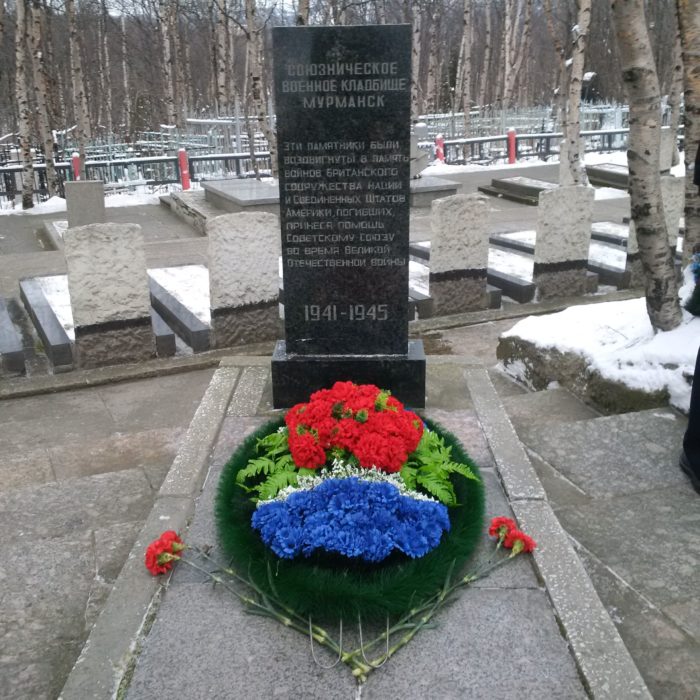
The following day we took the Antonov 24 regional flight from Murmansk to Arkhangelsk. This was my first time back in Arkhangelsk since the 75th anniversary commemorations on 31 August in the presence of HRH The Princess Royal, the band of the Royal Marines, and our wonderful veterans. The weather was certainly different but the welcome just as warm. We paid our respects at the cemetery for those who fell during World War One, the Allied Intervention period of 1918-19, and World War Two. The cemetery is always very well maintained and ice and snow had been cleared for our visit.
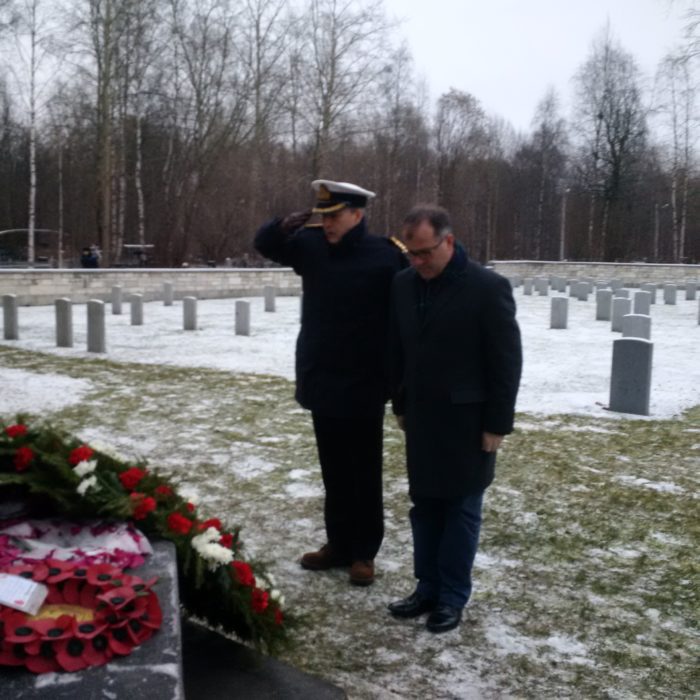
In previous blogs I’ve mentioned how an airfield on Kego Island (or Keg-Ostrov), which is across the Northern Dvina River from the city of Arkhangelsk, was used by British and Allied aircrew during World War Two. Indeed, some of the Hurricanes which arrived with the first convoy, ‘Dervish’, were removed from their containers, assembled, and flown from Kego Island to Murmansk in September 1941. I had heard that a new memorial had recently been unveiled on Kego Island in honour of the sacrifice and contribution made by British and Allied airmen and crew during World War Two. We made some enquiries and the local and regional authorities kindly arranged for me to visit Kego Island. We took the ice-breaker class tug from the port in Arkhangelsk across the frozen river to the island. Kego Island community leaders met me and took me to see the small but colourful monument next to a larger monument recognising the Soviet 5th Air Regiment on the banks of the Northern Dvina River. It’s a peaceful spot to reflect on an important period of our shared history. Nearby is the old grass airfield which closed in 1981. We crossed the field to the home of a community leader where we enjoyed some hot tea and looked through a facinating old family photo album of his grandfather’s service during World War Two. This was a very special moment to end what was an incredible week of commemoration in North West Russia.

Events to commemorate the Arctic Convoys continue with a possible event in Murmansk in January and another in Loch Ewe, Scotland, in May. Loch Ewe was where many of the convoys gathered before setting out on the perilous journey through Arctic waters to Russia. We look forward to once again honouring our veterans for their service and sacrifice. We are all very grateful.
